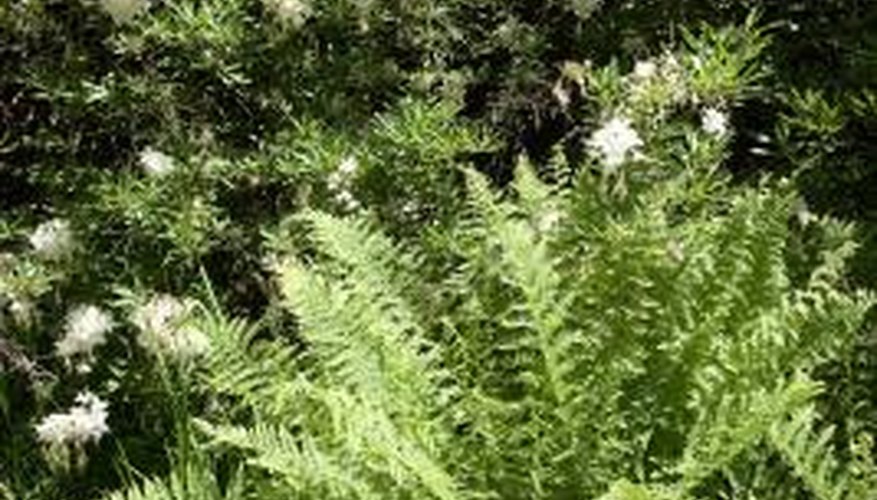Ferns are delicate, leafy plants that grow well in shaded areas in gardens or in the indirect sunlight they receive when growing in planters inside. Their distinctive divided green leaves make ferns an attractive plant. However, when the fronds of ferns start to become discoloured and black, the plant may be suffering from an incurable disease.
Foliar Nematodes
Aphelenchoides fragariae, or foliar nematodes, are minuscule pests that feed on the leaves of numerous plants, including fern plants. As the foliar nematodes eat away at the leaves, the ferns' fronds develop dark green spots that turn brown to black as they grow larger and expand to cover more of the fronts. There is no treatment available that will prevent foliar nematodes from killing a fern plant. Remove and destroy ferns that show signs of foliar nematode damage.
- Aphelenchoides fragariae, or foliar nematodes, are minuscule pests that feed on the leaves of numerous plants, including fern plants.
- As the foliar nematodes eat away at the leaves, the ferns' fronds develop dark green spots that turn brown to black as they grow larger and expand to cover more of the fronts.
Root Nematodes
Pratylenchus nematode species feed on the roots of fern plants and other plants, which causes serious problems for the leaves. As the root nematodes feed, the leaves of the ferns wilt and turn grey to black as they die. Rotting and blackening of the roots is another symptom of damage done by these nematodes. As with foliar nematodes, there is no treatment for root nematodes and affected plants must be destroyed. Planting ferns in pasteurised potting soil prevents nematodes from damaging the plant, according to the Penn State website.
- Pratylenchus nematode species feed on the roots of fern plants and other plants, which causes serious problems for the leaves.
- As with foliar nematodes, there is no treatment for root nematodes and affected plants must be destroyed.
Rhizoctonia Root Rot
Rhizoctonia solani is a fungal disease that causes a condition known as Rhizoctonia root rot, which is a serious problem for ferns. As ferns are affected by the fungi, they develop brown spots near the top of the plant; these spots darken and become black as they spread, and eventually cover the whole leaf. According to Penn State, fungal webbing can spread between the leaves of the fern. Treat Rhizoctonia root rot with a fungicide spray that contains chlorothalonil.
- Rhizoctonia solani is a fungal disease that causes a condition known as Rhizoctonia root rot, which is a serious problem for ferns.
Bacterial Disease
There are a variety of bacterial diseases that may affect fern plants, especially Asplenium or bird's nest ferns. Bacterial diseases cause the development of translucent spots or blisters on the margins of fern leaves. As the bacterial disease progresses, these spots turn yellow and brown or black, and eventually the whole leaf may die. Bacterial diseases are sometimes treatable with fungicidal sprays, although severely infected plants should be destroyed. Remove any leaves that show signs of bacterial infection to slow or stop the disease from spreading.
- There are a variety of bacterial diseases that may affect fern plants, especially Asplenium or bird's nest ferns.
